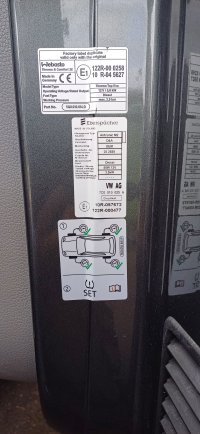Little owl1963
Lifetime VIP Member
Been studying this heater takes around 10 miles for engine to reach 90 degrees .
The heater increments are low then 16 degrees right up to 29 degrees then to high setting which is 30 degrees max .
Even on 27 degrees is just about warm /hot .
Why do you have to put this heater up so high, to get hot air out air vents ???
And takes at least half hour to get to temp !!!
Must be worst heater ever known. Is this normal for volkswagen heaters?? Or am I missing something ??
To the contrary I have a 10 year old ford transit connect works van , at just over half way on temp control it's red hot in around 10 mins .
Why are ford transit heaters so much better than volkswagens ???
Are there different types of heaters an different ways in which they operate ??.
The heater increments are low then 16 degrees right up to 29 degrees then to high setting which is 30 degrees max .
Even on 27 degrees is just about warm /hot .
Why do you have to put this heater up so high, to get hot air out air vents ???
And takes at least half hour to get to temp !!!
Must be worst heater ever known. Is this normal for volkswagen heaters?? Or am I missing something ??
To the contrary I have a 10 year old ford transit connect works van , at just over half way on temp control it's red hot in around 10 mins .
Why are ford transit heaters so much better than volkswagens ???
Are there different types of heaters an different ways in which they operate ??.
















